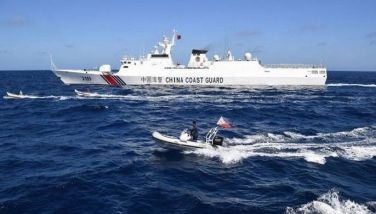Rice self-sufficiency program fails
MANILA, Philippines (Xinhua) - In December 2011 or just one and a half year after President Benigno Aquino III assumed office in June 2010, Agriculture Secretary Proceso Alcala bragged that the days of the Philippines as a rice importer were over.
"From being the top rice importer we will be a rice exporter in a span of four years," Alcala said, adding that the Philippines was on its way to become a rice exporter in 2014 because by then the country could have achieve rice self- sufficiency.
In November 2011, Aquino himself said he was confident that the Philippines could become a rice exporter during his term.
Alcala then said that making the Philippines a rice seller in the world market is part of the Aquino administration's goal of becoming self-sufficient in rice to fill the demand of its 90 million population.
"After 2013, we will be self-sufficient in rice. By 2014, we should not import anymore. We should start exporting," Alcala said.
But after four years, what happened to the Aquino administration's ambitious rice program?
The Philippines has now more than doubled its minimum rice import volume to 805,000 metric tons yearly from 350,000 metric tons, according to country's chief negotiator on the trade of the staple grain.
Romeo Recide, who was most recently the director of the Bureau of Agricultural Statistics, said on Thursday that of the new minimum access volume, 755,000 tons will be allocated as country- specific quotas while the remaining 55,000 tons may come from any trading partner.
According to Recide, suppliers from Vietnam and Thailand would get the bulk of the new country quotas.
On Monday, Agriculture Secretary Proceso J. Alcala did not say why there has been a complete turnaround in his earlier projection except in saying that the Philippines has practically secured an extension of the quantitative restrictions or barriers on rice imports until 2017 as all countries with interest in accessing the local market have assented.
Alcala said the World Trade Organization (WTO)'s Council for Trade in Goods will endorse such extension for approval when the WTO general council convenes on July 24-25, adding that this next step was "merely formality" and that the Philippines can now continue observing the controlled entry of imported rice into the domestic market.
In 2010, the Philippines imported 2.4 million metric tons of rice from various Asian countries, pushing up the price of the staple in the world market.
The DA has drastically cut the country's importation volume while working to hike the rice production volume. In 2011, the National Food Authority's importation requirement was only at 860, 000 MT. This was further lowered to 500,000 MT for 2012 and 350, 000 MT last year.
But based on the government's latest announcement of the doubling of rice imports, it seemed that the country's rice self- sufficiency program has miserably failed.
The International Rice Research Institute (IRRI), located in the province of Laguna, some 100 km south of Manila, has a study that explains why the Philippines will continue to import rice in the long haul.
The IRRI study showed that Asian rice-exporting countries occupy river deltas with lots of land suitable for rice production. These countries are all in mainland Southeast Asia: Thailand, Vietnam, Cambodia, and Myanmar. Thailand, in fact, has about four times the quantity of arable land per person as the Philippines.
Located off the eastern edge of the Asian continent, the Philippines also bears the brunt of numerous typhoons, making rice production more difficult and risky. Thailand and the Mekong and Red River deltas are much less affected by such recurring disasters.
Consistent rice importers have less arable land per person and more varied landscapes favoring such alternatives as corn, oil palm, or coconut. These countries are all islands such as Indonesia, the Philippines, Japan, Sri Lanka and Malaysia, which is part island and part narrow peninsula, the IRRI said.
According to the IRRI study, Malaysia is the Asian country most reliant on rice imports, which account for 29 percent of its consumption. Other countries that import rice to meet a significant portion of demand, with percentages averaged for 1996- 2003 are the Philippines, 12 percent; Sri Lanka, 8 percent; Japan, 6 percent; and Indonesia, 5 percent.
"Strikingly, all five have consistently imported rice for at least the past century. The Philippines, for example, has imported rice almost every year since 1869 (except in the latter part of the l970s during the Marcos regime when it was able to export rice) ..., " the IRRI said.
- Latest
- Trending


























